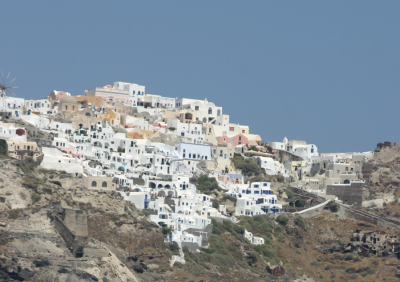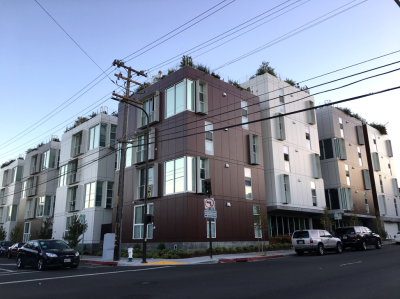Cool Science
The Problem
Exterior walls receive about only about half as much sunlight as roofs, but typically have only about half as much insulation and are closer to the ground. A city can also have substantially more wall area than roof area. Therefore, dark walls can heat buildings1 and aggravate the urban heat island effect2 much like dark roofs.
Notes:
1 Rosado P, Levinson R, 2018. Solar-reflective “cool” walls: Benefits, technologies, and implementation. Appendix A: Simulated HVAC energy savings in an isolated building (Task 2.1 report).
2 Zhang J, Mohegh A, Li Y, Levinson R, Ban-Weiss G, 2018. Systematic comparison of the influence of cool wall versus cool roof adoption on urban climate in the Los Angeles basin. Environmental Science & Technology, 52(19), 11188–11197.
Cool Walls
Definition
Reflective walls have long been used to cool buildings in hot, sunny climates. A “cool” wall is an exterior wall surface that stays cool in the sun by strongly reflecting sunlight and by efficiently emitting thermal infrared radiation. Just like a cool roof, a cool wall should exhibit both high solar reflectance (also known as “albedo”) and high thermal emittance.
Benefits and Penalties
The benefits and penalties of cool walls are similar to those of cool roofs.
Benefits include cooler outside air, fewer power plant emissions, better air quality, energy and cost savings, reduced electrical grid strain, and improved indoor comfort. Whether cool walls may slow climate change via “global cooling” has not yet been analyzed.
Penalties can include an increased need for heating in winter. Glare is unlikely unless the cool wall has a shiny metal surface or is extremely bright white—choices best avoided if you like your neighbors.
Technology

Making a wall cool is much like making a roof cool. Commercially available light color paints and darker “cool color” paints can be field applied to walls or factory-applied to wall products. Integrally colored wall products such as vinyl siding can also incorporate light color or cool color pigments. While most wall surfaces reflect diffusely and send about half of their reflected light into city, special retroreflective wall products that return light toward the sun could help bounce sunlight out of the city. Prototype solar retroreflective wall products are under development.
Figure 1 shows building walls in Santorini, Greece that have been white-washed (coated with a solution of powdered lime) for high reflectance. A more likely option for buildings in North America is using a light-colored (e.g., off-white or dull-white) or cool colored exterior wall paint when the wall is first built or routinely repainted (Figure 2).
